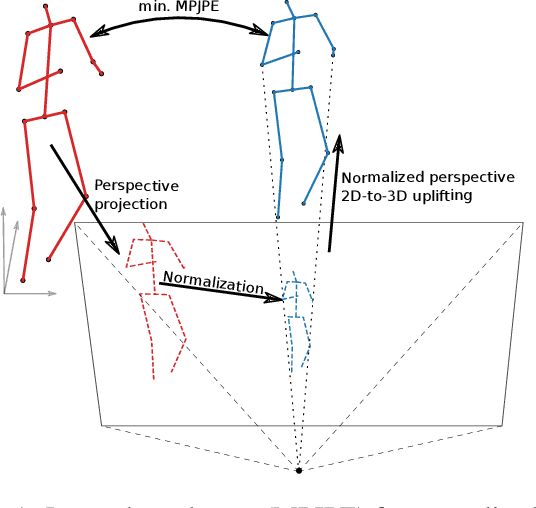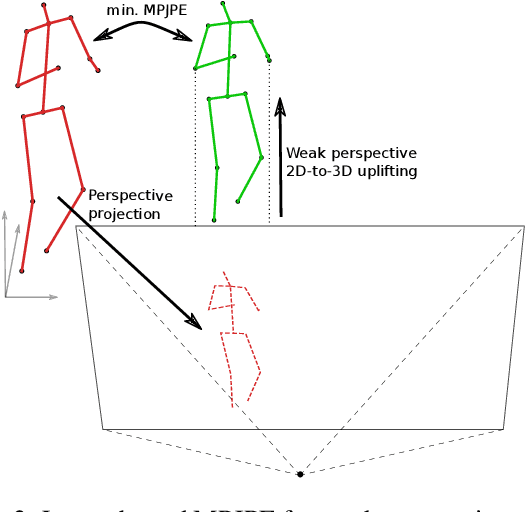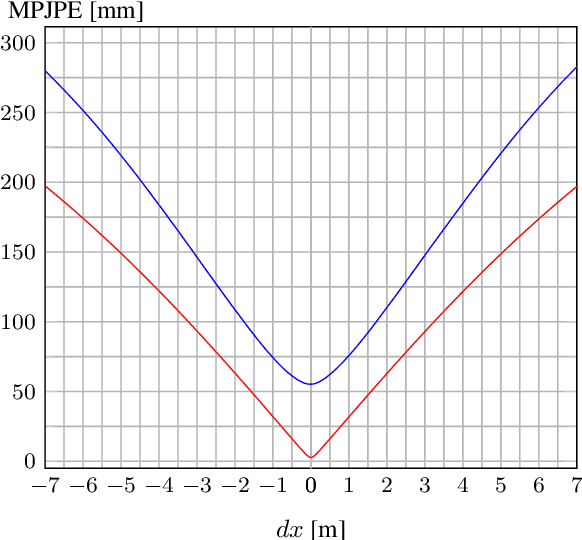Nikolas Klug
Error Bounds of Projection Models in Weakly Supervised 3D Human Pose Estimation
Oct 23, 2020



Abstract:The current state-of-the-art in monocular 3D human pose estimation is heavily influenced by weakly supervised methods. These allow 2D labels to be used to learn effective 3D human pose recovery either directly from images or via 2D-to-3D pose uplifting. In this paper we present a detailed analysis of the most commonly used simplified projection models, which relate the estimated 3D pose representation to 2D labels: normalized perspective and weak perspective projections. Specifically, we derive theoretical lower bound errors for those projection models under the commonly used mean per-joint position error (MPJPE). Additionally, we show how the normalized perspective projection can be replaced to avoid this guaranteed minimal error. We evaluate the derived lower bounds on the most commonly used 3D human pose estimation benchmark datasets. Our results show that both projection models lead to an inherent minimal error between 19.3mm and 54.7mm, even after alignment in position and scale. This is a considerable share when comparing with recent state-of-the-art results. Our paper thus establishes a theoretical baseline that shows the importance of suitable projection models in weakly supervised 3D human pose estimation.
k-RNN: Extending NN-heuristics for the TSP
Oct 17, 2018

Abstract:In this paper we present an extension of existing Nearest-Neighbor heuristics to an algorithm called k-Repetitive-Nearest-Neighbor. The idea is to start with a tour of k nodes and then perform a Nearest-Neighbor search from there on. After doing this for all permutations of k nodes the result gets selected as the shortest tour found. Experimental results show that for 2-RNN the solutions quality remains relatively stable between about 10% to 40% above the optimum.
 Add to Chrome
Add to Chrome Add to Firefox
Add to Firefox Add to Edge
Add to Edge